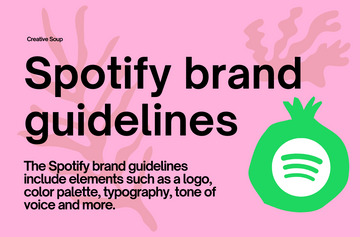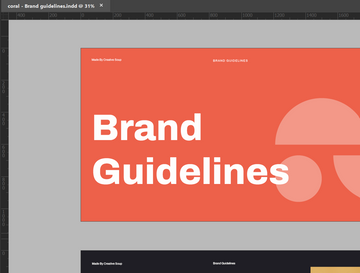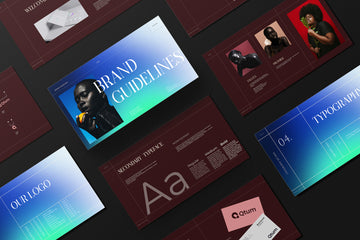Introduction:
Selling logo ideas to clients is a crucial aspect of a designer's work. The ability to convince clients of the value and effectiveness of their designs can make the difference between success and missed opportunities. In this article, we will explore ten essential strategies to help designers effectively present and sell their logo ideas to clients.
1. Understanding the Client's Needs

Before presenting logo ideas to a client, it is imperative to gain a deep understanding of their business, target audience, and objectives. Thorough research of the client's industry, competition, and target market will provide valuable insights into what the client needs in a logo. By addressing their specific requirements, designers can offer design solutions that align perfectly with the client's overall business goals.
2. Highlighting the Benefits of Logo Ideas

When presenting logo ideas, designers should emphasize the benefits these designs will bring to the client's business. A well-crafted logo can significantly impact a business by enhancing brand recognition, fostering better customer engagement, and leaving a memorable impression on the target audience. Clearly communicating these benefits can help clients see the value in the proposed designs, increasing the likelihood of approval.
3. Utilizing Visual Aids
Visual aids play a crucial role in bringing logo designs to life for clients. From initial sketches to realistic mockups and prototypes, these visual representations help clients better grasp the design concepts. Visual aids make the ideas more tangible, allowing clients to visualize how the logo will appear in real-world applications. This visualization can instill confidence in the designs and make clients more receptive to the proposals.
4. Building a Rapport with Clients

Building a strong and positive relationship with the client can significantly influence their decision-making process. Taking the time to understand their needs, showing genuine interest in their business, and actively listening to their input demonstrates a designer's commitment to delivering exceptional results. A good rapport fosters trust, making clients more inclined to embrace the proposed logo ideas.
5. Balancing Confidence and Professionalism
Confidence is key when presenting logo ideas, but it must be paired with professionalism and a collaborative approach. Avoid being overly aggressive or pushy, as it can create an unfavorable impression. Instead, present the designs in a composed manner and encourage open dialogue with the client. This approach fosters a positive atmosphere for discussion and decision-making.
6. Showcasing Unique Design Approaches

To stand out from the competition, designers must showcase their unique approach to logo design. Sharing a well-defined design philosophy, highlighting previous successful projects, and explaining how their designs have solved similar business challenges can instill confidence in the client. Demonstrating expertise and differentiation can make the proposed ideas more appealing to clients.
7. Being Flexible and Adaptable
While designers should be confident in their ideas, they must also be open to feedback and willing to make adjustments based on the client's preferences. Clients may have specific visions or requirements for their brand, and a flexible attitude can lead to a collaborative and fruitful design process. This adaptability shows a willingness to prioritize the client's needs, ultimately leading to better outcomes.
8. Using Real-Life Examples and Case Studies

Supporting the presented logo ideas with real-life examples and case studies can be highly persuasive. By showcasing how other businesses have successfully used similar logos to achieve their goals, designers provide tangible evidence of their designs' potential impact. Incorporating statistics and data further bolsters the credibility of the proposals.
9. Emphasizing the Creative Process

Detailing the creative process behind each logo design can help clients appreciate the thought and effort invested in the concepts. Discussing the research, brainstorming, and design iterations demonstrates the level of expertise and professionalism a designer brings to the table. Clients are more likely to value and respect designs when they understand the depth of creativity involved.
10. Focusing on Long-Term Impact
While immediate benefits are crucial, it is equally important to discuss the long-term impact of the proposed logo designs. Engaging in conversations about future brand recognition, customer engagement, and business growth positions the designs as long-term investments rather than short-term solutions. This forward-looking approach can sway clients toward embracing designs that will continue to serve their business needs over time.
Conclusion:
In conclusion, successfully selling logo ideas to clients involves a combination of understanding the client's needs, highlighting the benefits of the proposed designs, and fostering a positive and collaborative working relationship. By showcasing unique design approaches, being flexible, and using real-life examples, designers can increase the chances of clients saying "yes" to their ideas. Emphasizing the creative process and focusing on the long-term impact solidifies the value of the designs and demonstrates the designer's commitment to their client's success.
FAQs:
-
Q: How do I start understanding the client's needs for their logo? A: Begin by conducting thorough research on the client's business, industry, target audience, and objectives. Engage in open discussions with the client to gain a deeper understanding of their vision and preferences.
-
Q: Should I focus more on the visual aspect or the benefits of the logo when presenting to clients? A: Both aspects are important. While visuals help clients visualize the design, emphasizing the benefits, such as increased brand recognition and customer engagement, adds value to the proposal.
-
Q: How can I build a strong rapport with clients during the design process? A: Take the time to get to know the client, actively listen to their ideas, and show genuine interest in their business. Regularly communicate progress and be responsive to their feedback.
-
Q: What should I do if a client requests significant changes to my proposed logo designs? A: Be open to feedback and consider the client's perspective. If the changes align with the client's vision and business goals, be flexible and willing to adapt your designs accordingly.
-
Q: Is it essential to provide real-life examples and case studies when presenting logo ideas? A: Yes, real-life examples and case studies can strengthen your proposals by showcasing how similar logos have succeeded in achieving their objectives, backed by data and statistics.
Unlock the Secret to Passive Income: 5 Strategies for Designers
3 Brand Guidelines Template Canva, Examples For Consistent Branding
8 Famous Free Fonts Used by Leading Companies





